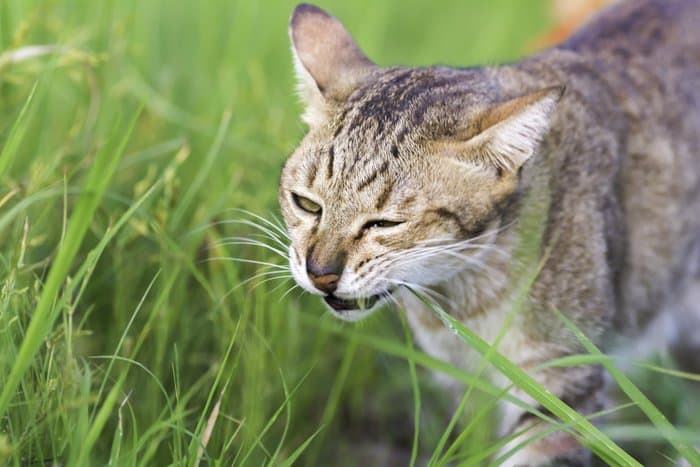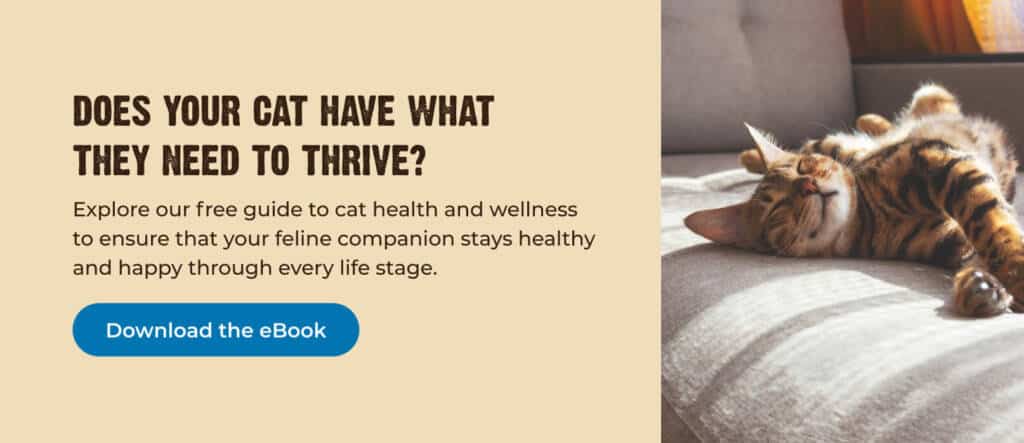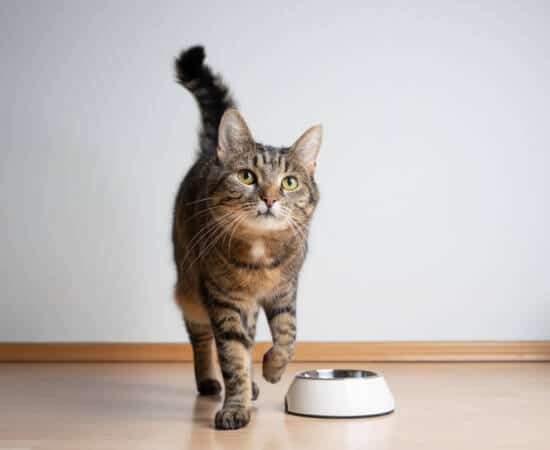10 Reasons Why Cats Vomit

Cat vomit is unpleasant for both cats and humans, especially if you don’t understand the cause. This article identifies 10 possible causes of cat vomiting and explains ways to address the situation.
10 Common Reasons Why Your Cat May Be Throwing Up
1. Eating too fast
A cat’s digestive system can become overloaded when food is consumed too quickly or in too great a quantity. When this happens, vomiting is a protective response to help prevent a bombardment of too much food too quickly.
2. Allergies
While we typically think of skin rashes and itching as a sure sign of allergies in cats, another common symptom is vomiting. Most notably, food allergies can cause gastrointestinal problems like diarrhea and vomiting.
There are also seasonal, chemical and environmental allergies that can cause vomiting. When it comes to identifying allergies, the best bet is to have a full allergy panel test run by a trusted veterinarian.
3. Poisoning
Many items around the house can be toxic to cats (antifreeze, insect spray, cleaners, human medications, etc.) and vomiting is often an autonomous reaction a cat has in order to reject a poisonous substance they’ve eaten.
Sudden vomiting or general lethargy can be initial signs of poisoning. If poisoning is suspected, contact your local vet professional for advice and treatment. Keep in mind, some products like anti-freeze come in pet-safe formulas, but they still should be safely stored and out of reach from pets and children.
4. Feline Inflammatory Bowel Disease
Feline Inflammatory Bowel Disease (IBD) is a condition that causes a cat’s gastrointestinal tract to become chronically inflamed or irritated. Feline IBD most often occurs in older cats, but felines of any age can be affected. If IBD is the cause of your cat’s vomiting, it will likely be accompanied by other symptoms such as weight loss, diarrhea, lethargy and decreased appetite.
5. Feline Pancreatitis
For cats and humans alike, the pancreas performs vital functions in the digestive process. Pancreatitis develops when the pancreas becomes inflamed and is accompanied by symptoms including vomiting, fever, abdominal pain, diarrhea and decreased appetite.
Pancreatitis in cats requires a diagnosis by a veterinarian. They will perform lab tests or ultrasounds to show the extent of the inflammation and surrounding areas. If vomiting is a side effect, your veterinarian can prescribe medication to help your cat feel more comfortable.
6. Chronic Kidney Disease
Chronic kidney disease is when kidney function begins to slowly decline, and it can be very common in older cats. Symptoms can include vomiting, weight loss and increased urination and thirst.
7. Feline Diabetes
All cells need energy to carry out their functions. In general, the quickest energy comes in the form of glucose, or sugar. For the sugar to be used as fuel, it must be obtained from the bloodstream after being digested in the food the animal eats. The hormone insulin facilitates this process. Vomiting can be a common symptom of feline diabetes, which occurs when the levels of insulin and sugar in a cat’s bloodstream are not balanced.
8. Hyperthyroidism
Hyperthyroidism is a disease that affects a cat’s endocrine system. Most cats develop hyperthyroidism due to benign growths in the thyroid gland that increase the size of the gland. CatHealth explains that this can result in an increase in the concentration of thyroid gland hormones. Signs of hyperthyroidism include vomiting, weight loss, excessive thirst and urination.
9. Hepatic Lipidosis
Also known as fatty liver disease, hepatic lipidosis is a condition in which a cat’s liver function in the digestive process is compromised. Common symptoms include a loss of appetite and vomiting.
It’s important to note that hepatic lipidosis is most likely indicative of another health malady. In fact, as Dr. Sharon Carter, DVM of Cornell University’s College of Veterinary Medicine notes, “In more than 90% of cases hepatic lipidosis is a secondary consequence of some other underlying condition.” These conditions can include obesity, cancer or diabetes.
10. Hairballs
Hairballs are well known to cause vomiting. These instances can simply involve “hacking up the hairball” to clear the airway or a disruption of the digestion process. Although hairballs can be disturbing, they often result from the cat’s self-grooming routine which is frequent for most felines.
If your cat suffers from an excessive amount of hairballs, you may want to evaluate their hydration levels. “If a cat’s diet isn’t providing enough moisture, her digestive tract is working harder than it should, which may make her hairball problem worse,” says pet parenting expert Kristen Levine. “Drinking water is important, but your cat can also get hydration from her food.” Wet, canned food provides more moisture than dry food, so you may want to consider wet meal options for your cat.
What Cat Vomit Color Means
Generally, if a cat vomits from eating too fast or because a meal disagreed with them, the color and consistency will include undigested or lightly digested food. If the vomit includes stomach bile (a brown or yellowish slightly opaque fluid), a problem may be occurring in the functioning of internal organs. You should take your cat to the vet if the color of their vomit is out of the ordinary or becomes a concern.
Treatment & Prevention
Vomiting from eating too fast or because of hairballs is unpleasant but not uncommon. Such occurrences don’t necessarily signal a serious issue. In the case of eating too fast, breaking food into frequent, smaller meals or even using a food maze feeding-bowl can help your kitty slow down. Additionally, frequent brushing or grooming can remove loose fur and help reduce hairballs.
However, as the conditions outlined in this post indicate, vomiting may be a symptom of a serious health concern. Proper diagnosis of the cause of vomiting is paramount to finding proper treatment and may require veterinary consultation.
When to Take Your Cat to the Vet
Hairballs and eating too fast may not be immediate causes for concern, but if these issues occur frequently, your cat may benefit from a vet visit.
After reviewing the possible causes outlined above, it is wise to seek a veterinarian’s opinion if hairballs and eating too fast are not causes of your cat vomiting. As certified clinical pet nutritionist Lisa Selvaggio writes, “If your kitty is vomiting a lot — such as more than once a day or for several days in a row — it’s best to call your vet for a checkup.”
Don’t hesitate to seek professional advice if you are concerned about your cat’s health. The internet can be a great resource for learning, but be sure to use reputable sources. Cornell University’s Feline Health Center is a great resource on this topic.
Frequently Asked Questions
Q: How can I tell if my cat is going to vomit?
A: Your cat may have certain tells that will signal they are preparing to vomit. These can include restlessness, excessive salivation or licking their lips. According to VCA Hospitals, the vomiting process for a cat involves forceful contractions of the abdominal muscles and can be very distressing for the cat.
Q: How can I treat acute vomiting?
A: You should contact your veterinarian before giving your cat medicine or changing their diet. Typically, a veterinarian will advise feeding your cat an easy-to-digest, bland diet. Your cat may be prescribed medication to ease their nausea. Always make sure to have fresh water available for your cat to prevent dehydration.











